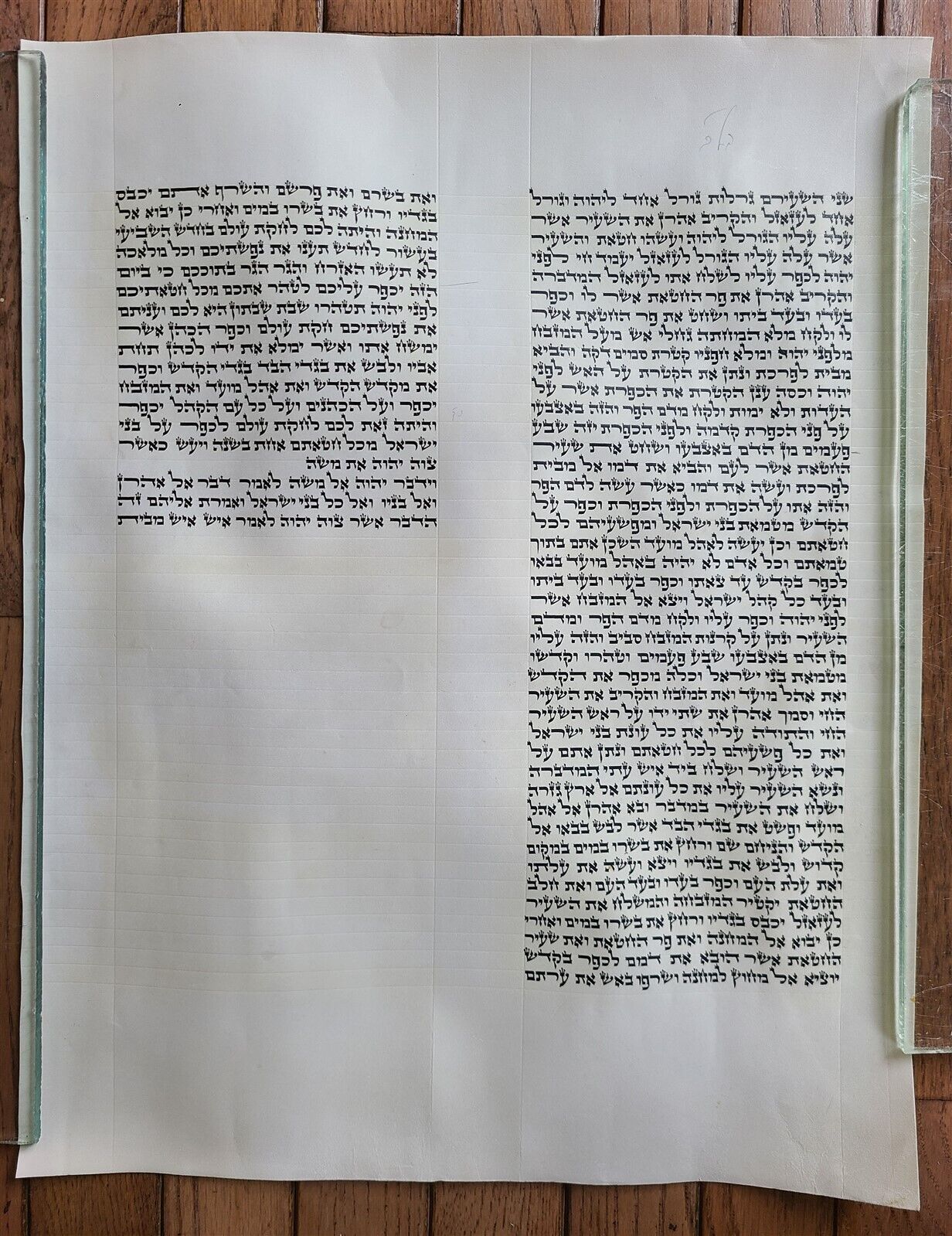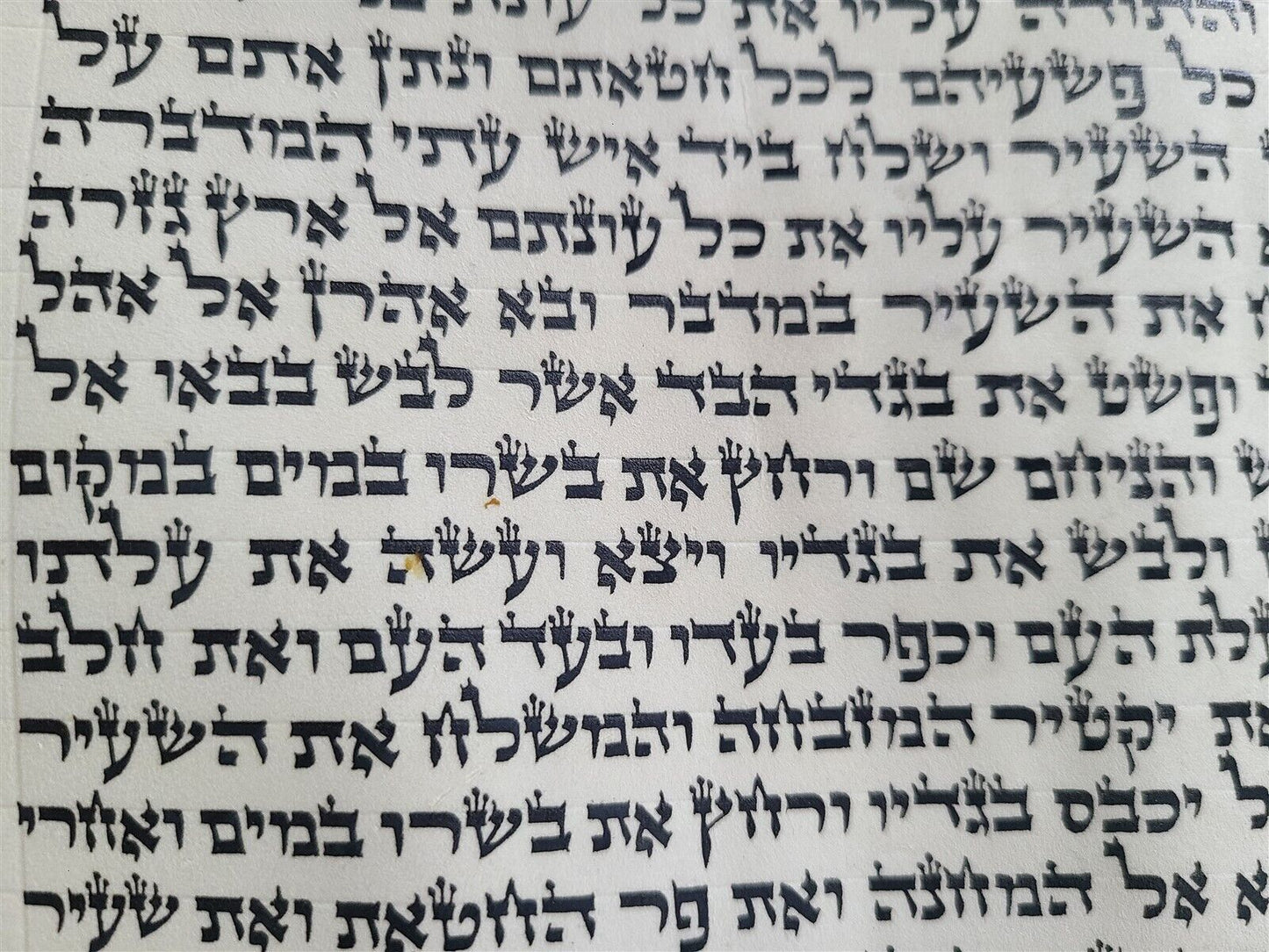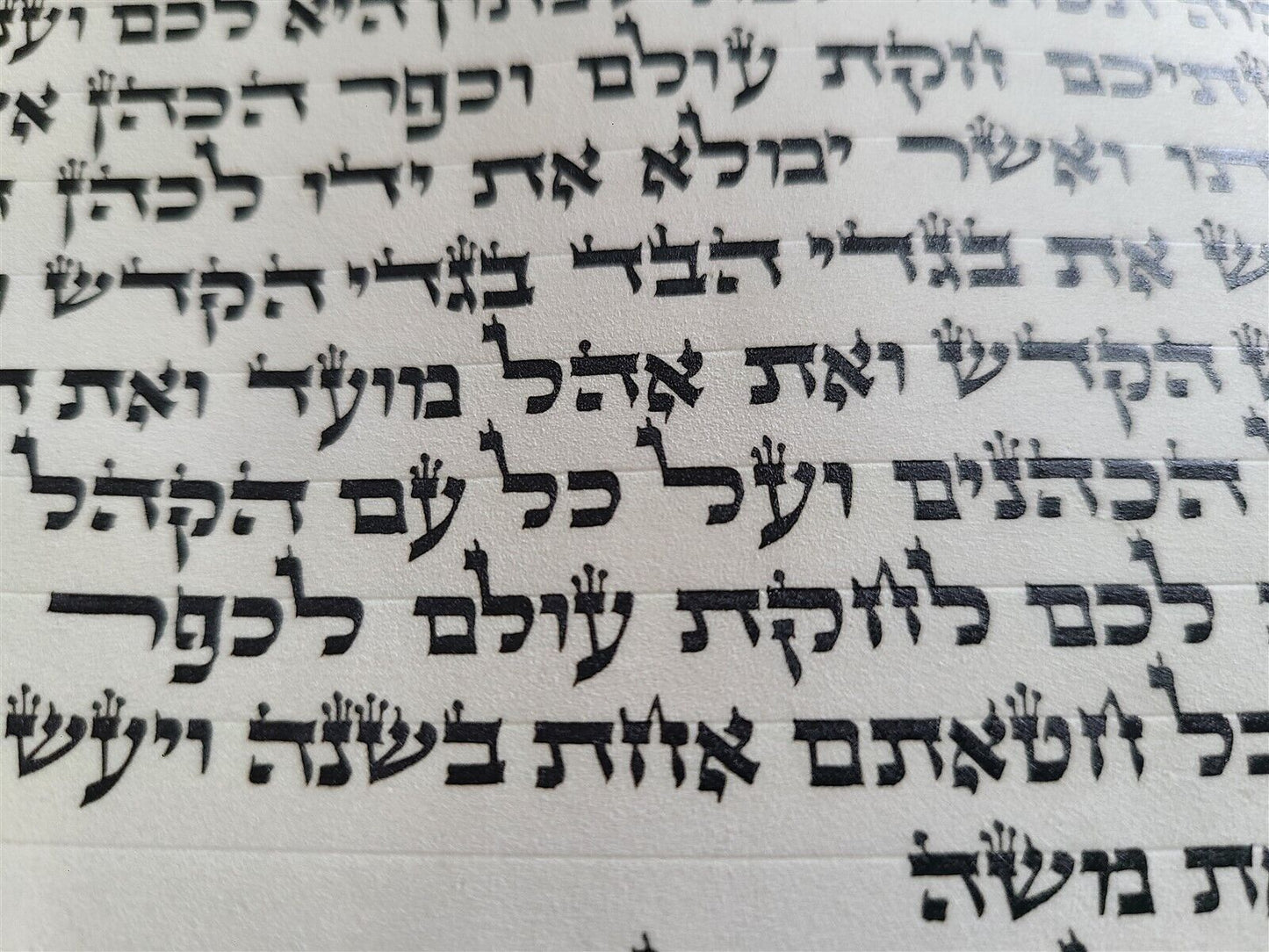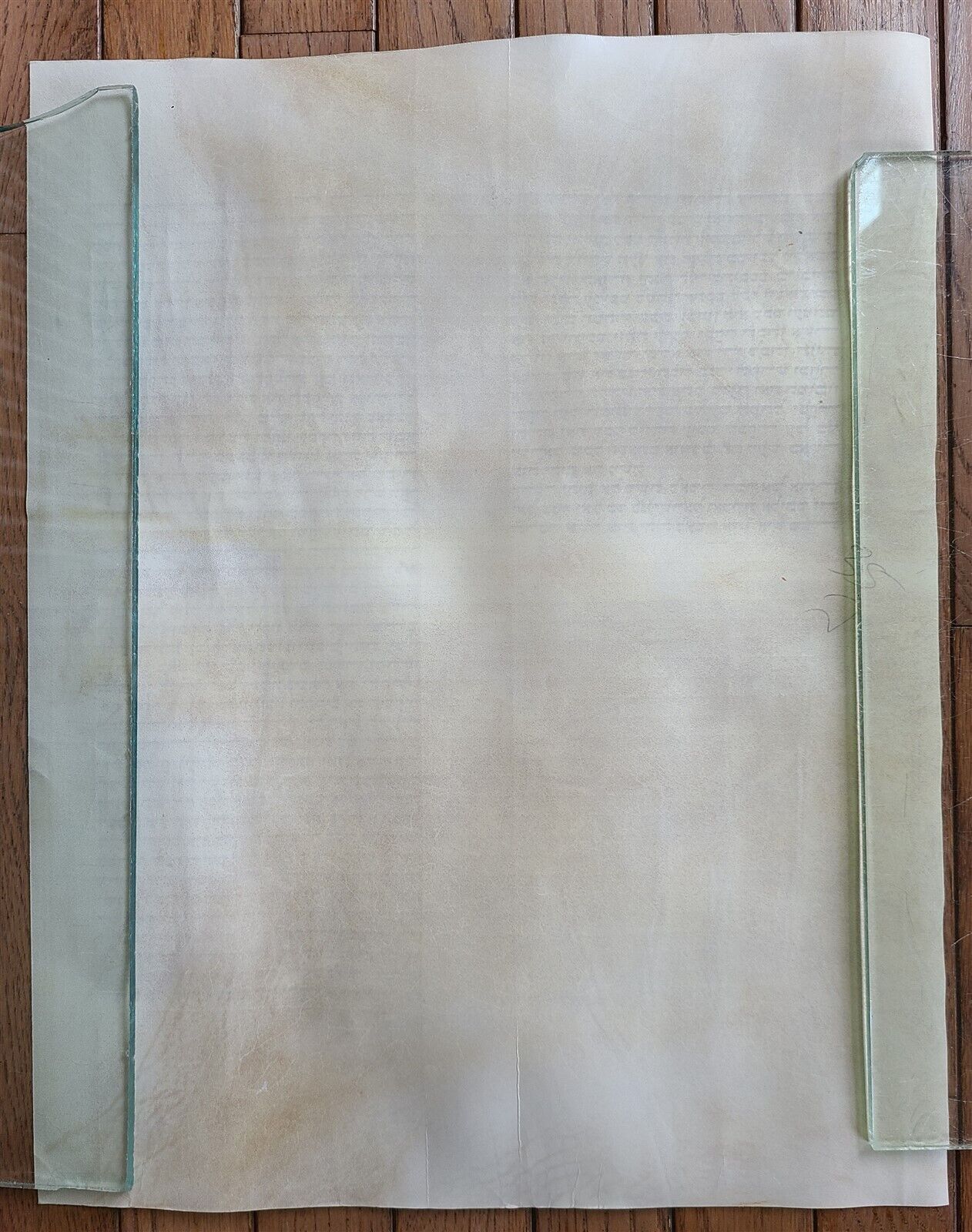Motka
TORAH SCROLL FRAGMENT MANUSCRIPT on VELLUM VINTAGE BIBLE LEVITICUS 16:8-17:3
TORAH SCROLL FRAGMENT MANUSCRIPT on VELLUM VINTAGE BIBLE LEVITICUS 16:8-17:3
Regular price
$69.99 USD
Regular price
$99.99 USD
Sale price
$69.99 USD
Unit price
per
Couldn't load pickup availability
Size 14.5 x 18.5"
LEVITICUS 16:8-17:3
Leviticus 16:8-17:3 describes the Day of Atonement, which includes the use of a scapegoat and the cleansing of the Israelites from their sins:
The scapegoat
In Leviticus 16:8, Aaron casts lots to select one goat for the Lord and one for the scapegoat. The goat chosen for the Lord is sacrificed as a sin offering, while the scapegoat is sent into the wilderness to atone for the sins of the people. The scapegoat represents Satan, who is blamed for the sins of the people after the sanctuary has been cleansed.
The cleansing of the Israelites
The Day of Atonement is a day of cleansing and sabbath rest, when the Israelites are to deny themselves and not do any work. The blood of the bull and goat for the sin offerings is brought into the Most Holy Place to make atonement. The hides, flesh, and intestines of the animals are then burned outside the camp.
The sacred linen garments
The high priest puts on sacred linen garments to make atonement for the Most Holy Place, the tent of meeting, the altar, the priests, and the community.
The prohibition of eating blood
Leviticus 17:2 prohibits the Israelites from eating blood, and states that anyone who does so must be cut off from the people.
--------------------







